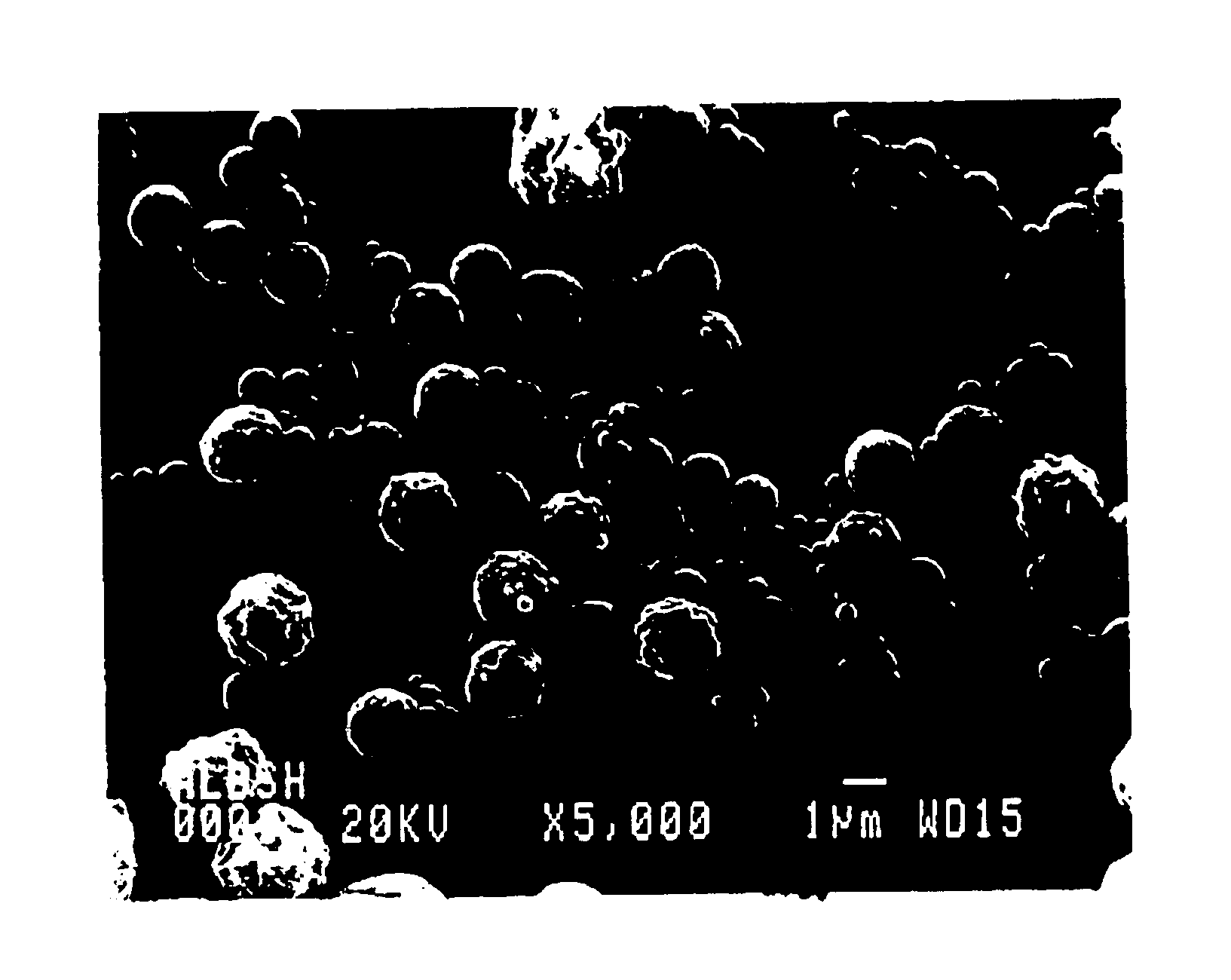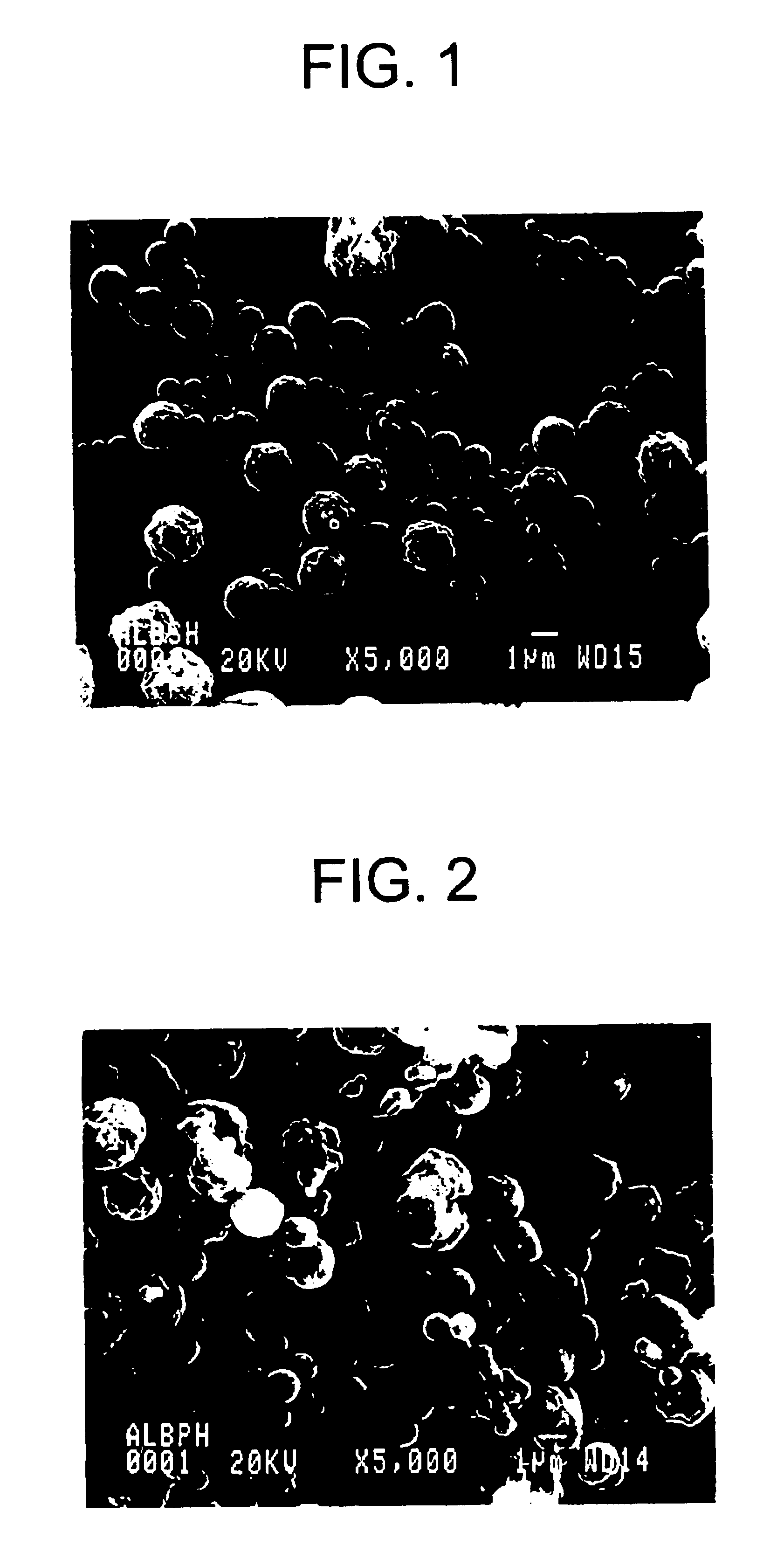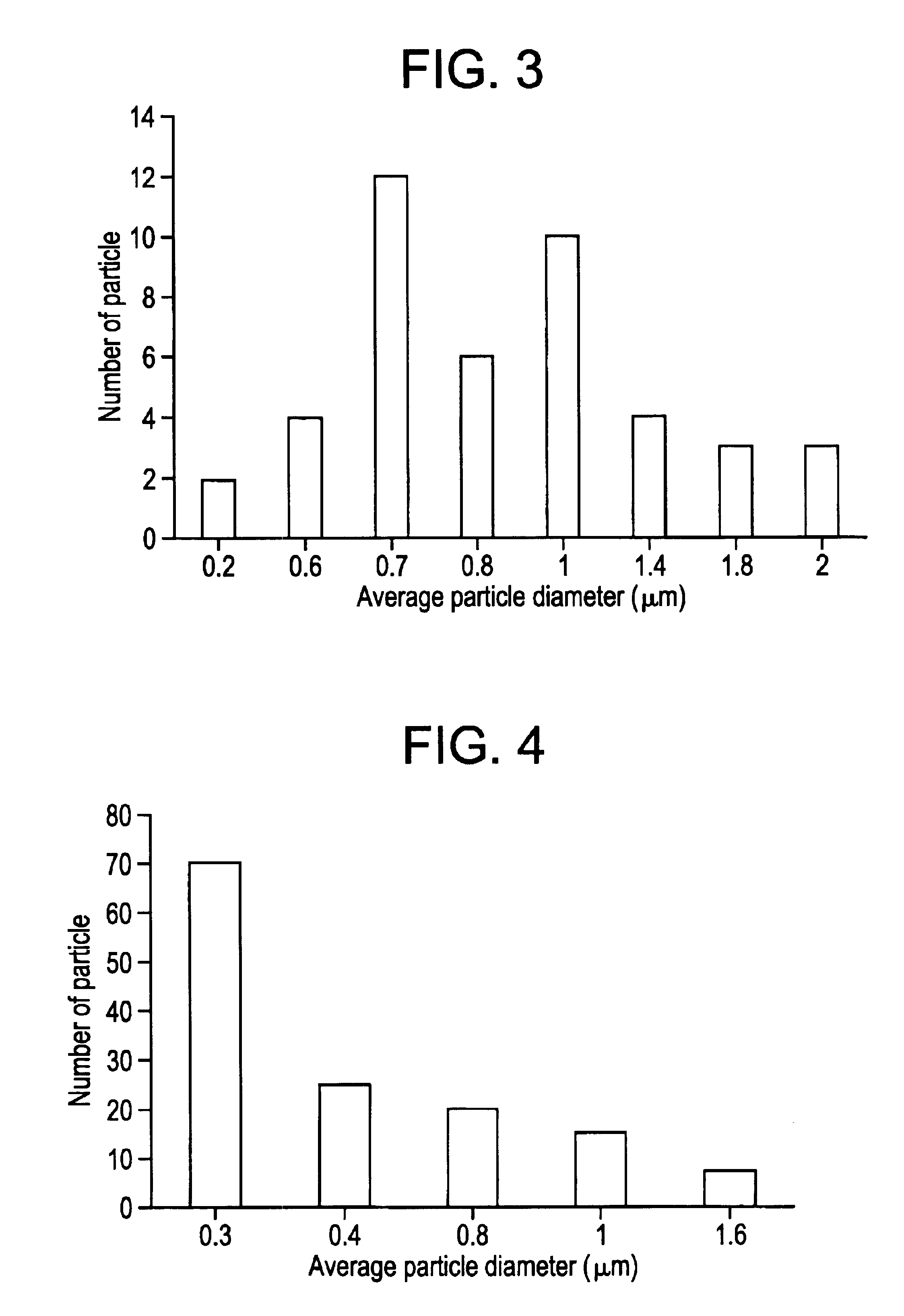Microencapsulation of magnetic material using heat stabilization
a magnetic material and heat stabilization technology, applied in the field of microencapsulation methods, can solve the problem that the linkage cannot be undetectable and permit agglomeration
- Summary
- Abstract
- Description
- Claims
- Application Information
AI Technical Summary
Benefits of technology
Problems solved by technology
Method used
Image
Examples
example 1
Synthesis of Albumin Magnetic Microspheres
[0047]Human serum albumin (HSA) magnetic microspheres containing 30% iron oxide particles were synthesized by a heat-stabilization process. HSA and cottonseed oil were obtained from Sigma Chemical Company. Iron oxide particles (maghemite with average size of 26 nm) were obtained from Nanotechnology Corporation.
[0048]HSA (250 mg) was dissolved in a dispersion of 75 mg iron oxide in 1 mL distilled water. The resulting solution / dispersion was added to 30 mL cottonseed oil containing 0.2 mL sorbitan sesquioleate. The mixture was shaken vigorously and then sonicated (using a Cole Parmer ultrasonic homogenizer) for three 30 s intervals at an amplitude of 60%. The sonication process was performed at 4° C. using an ice-water bath. The resulting (primary) emulsion was then added dropwise into 100 mL cottonseed oil heated at 130° C. and stirred at 1500 rpm, with the addition completed in 10 minutes. The mixture was kept at 130° C. and stirred for anot...
example 2
Characteristics of Albumin Magnetic Microspheres
[0050]The microparticles made in Example 1 were examined using scanning electron microscopy (SEM), atomic force microscopy (AFM), transmission electron microscopy (TEM), energy-dispersive X-ray analysis (EDXA), atomic absorption spectroscopy, and a superconducting quantum interference device (SQUID) magnemometer.
[0051]SEM and AFM results show microspheres that are substantially not agglomerated and that have a textured (i.e., non-smooth, cauliflower-like) surface, which is believed to result from the crosslinking process. See FIGS. 1 and 2.
[0052]In comparison to chemically stabilized microspheres made and tested in an earlier study, the heat stabilized microspheres made in Example 1 above possess a narrower size distribution. Histograms as obtained from SEM for the particle size distribution in dispersion and in powder form are shown in FIGS. 3 and 4, respectively.
[0053]The results of the EDXA showed that the magnetic particles were es...
PUM
| Property | Measurement | Unit |
|---|---|---|
| number average diameter | aaaaa | aaaaa |
| number average diameter | aaaaa | aaaaa |
| number average diameter | aaaaa | aaaaa |
Abstract
Description
Claims
Application Information
 Login to View More
Login to View More - R&D
- Intellectual Property
- Life Sciences
- Materials
- Tech Scout
- Unparalleled Data Quality
- Higher Quality Content
- 60% Fewer Hallucinations
Browse by: Latest US Patents, China's latest patents, Technical Efficacy Thesaurus, Application Domain, Technology Topic, Popular Technical Reports.
© 2025 PatSnap. All rights reserved.Legal|Privacy policy|Modern Slavery Act Transparency Statement|Sitemap|About US| Contact US: help@patsnap.com



